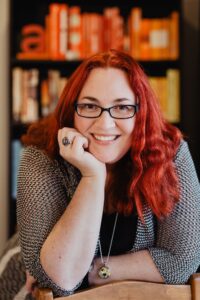Op Ed: Why Brilliant Minds should enter your school library
It’s a familiar story. It was her kindy teacher who first suggested she might be different; that her results didn’t line up with expectations. She avoided testing scenarios, confused letters with numbers, and had difficulty recalling words when she spoke.

The canteen manager pulled me aside one day to say that my daughter had not been able to remember the word banana but had used her hands to mime peeling and eating the fruit. Suddenly I realised that she often used her hands, body, and face to communicate when words had failed her.
It wasn’t just a quirk of her personality; it was a symptom.
By the time she started Year 1, it was clear that my daughter had a significant learning disability.
Check out our brand-new print issue of School News, available now!
Costly diagnosis
To diagnose dyslexia is a long and expensive process. Wait lists for assessment in the private sector can run to six months, and that’s if their books are even open for new patients. You can double that if you’re going public.

First, we attended a private clinic where she underwent a lengthy assessment, at least four hours spread over two sessions. Then she required six months of targeted literacy intervention.
I was fortunate that the primary school she attended had a literacy specialist who was able to take her for small group work a couple of times each week. I also worked with her daily at home and she attended speech therapy weekly. After six months, we returned for a second assessment to determine what progress had been made, before completing her diagnosis at the Dyslexia-SPELD Foundation which included an assessment of cognitive processing and an IQ test by an Educational Psychologist.
The entire process cost nearly $2,000 (not including speech therapy) with at least six hours of private testing and regular input both at school and at home. The demands of formal diagnosis puts it out of reach for many families. This is why, when you look at statistics about the prevalence of dyslexia in the community, the numbers vary between 5 and 10 percent. There are many undiagnosed children struggling in a system that is not designed to assist them.
Just as she finished Year 1, we received confirmation of what we already suspected. My daughter met the diagnostic criteria for a Specific Learning Disorder with severe impairment in reading (commonly known as Dyslexia). She was also at significant educational risk in the area of written expression (Dysgraphia).
Although her diagnosis was not a shock, our world changed that day. And we are not alone; there are up to 400,000 children with dyslexia in Australian schools or, on average, 40 in every school in the country.
Searching for the book
I did what many parents and teachers do during this process and went researching. I was looking for motivating and inspiring stories—I knew there were plenty of incredibly successful people with dyslexia, Jamie Oliver and Richard Branson came to mind, so I reasoned there must be a book detailing their stories.
But no matter where I looked, I couldn’t find one. And when I couldn’t find it, I decided I would write it myself.
At first, I just researched and wrote the stories for my daughter, snuggling up with her at bedtime and telling her about writers and artists and athletes and princesses all who lived with dyslexia. I wrote stories about entrepreneurs and actors and astronauts: “dyslexia might slow you down”, I told her, “but it can’t stop you”.
One characteristic many dyslexic people have in common is empathy; I’ve noticed that constantly working through challenges has made my daughter uniquely attuned to distress in others. She was the one who told me I needed to share my stories with other families.
Brilliant Minds

Brilliant Minds: 30 Dyslexic Heroes who Changed our World is precisely the book I wish I had found all those years ago, and it’s a book I think teachers will love. It doesn’t hide the fact that kids with dyslexia find school tough. It doesn’t gloss over the years of struggle, the extra work they need to do, the resilience they need to develop.
But it offers hope. Nothing is off limits. Erna Solberg is the Prime Minister of Norway. Steven Spielberg is an award-winning director. Jackie French is one of Australia’s most popular authors. Dr Cathy Foley is Australia’s Chief Scientist. Pete Conrad piloted a mission to the moon.
Published by Affirm Press, Brilliant Minds was released on October 25 during Dyslexia Awareness Month. I hope to see it reach the hands of children in their school libraries who, diagnosed or not, live with dyslexia or other specific learning disorders and might be doubting themselves.
But it’s also for the teachers, school librarians, support staff, and parents too, because we’re all on this journey together.
Brilliant Minds: 30 Dyslexic Heroes Who Changed Our World is OUT NOW.







